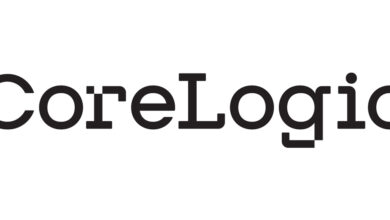Wi-Fi Research Report 2020: Technologies, Applications, Markets and Patents – ResearchAndMarkets.com

DUBLIN–(BUSINESS WIRE)–The “Wi-Fi: Extended Family – Technologies, Applications and Markets” report has been added to ResearchAndMarkets.com’s offering.
This report addresses recent or soon coming enhancements in one of the most established and powerful wireless technology – Wi-Fi. Originated in the 20s century, this WLAN family belongs to a very small group of communications technologies that does not getting obsolete with time.
The family continues to grow adding new members that bring WLAN to the forefront of today innovations in communications with multiple applications and pushing up the limits in performance. Wi-Fi will support and strengthen 5G networks making them more flexible and efficient.
The report goal is to analyze recently introduced or still in the development advanced Wi-Fi technologies, their applications and marketplace. It also surveys related industries.
In particular, it addresses such developments as:
1. 802.11n. The technology already produced a multi-billion market, improving such communications characteristics as the rate of transmission, coverage and other. It significantly increased the spectrum of Wi-Fi applications. In recent years, 802.11n products dominated the Wi-Fi market; but this technology is gradually losing its leading position to newer members of the Wi-Fi family, such as:
2. 60 GHz Wi-Fi – 802.11ad. This is the Wi-Fi industry response on the users’ new requirements to support gigabits per second transmission rates over shorter ranges for such applications as a home/office distribution of HDVD and similar bandwidth-hunger applications. The report addresses specifics of 60 GHz channels and details WiGig/802.11ad technology. It also introduces the NG 60 GHz 802.11ay standard.
3. White Spaces Wi-Fi (White Wi-Fi – 802.11af). This technology allows utilizing the property of sub-gigahertz transmission together with Wi-Fi advances. It utilizes unused windows of the TV spectrum and will work with Cognitive Radios.
4. Sub – 6 GHz Wi-Fi – 802.11ac. This development allows gigabits per second speed and improves characteristics of IEEE 802.11n technology in wide spectrum of characteristics.
5. Sub – 1 GHz Wi-Fi (excluding White Spaces) – 802.11ah.
6. IEEE standard in the development: P802.11ax, which stretches Wi-Fi characteristics beyond imaginable just a few years ago.
7. WAVE 802.11p – Dedicated Short Reach Communications 5.9 GHz- contribution of Wi-Fi to the development of the connected car.
8. Other.
The report details technical and marketing specifics of these types of WLAN technologies as well as surveys their industries and shows that Wi-Fi 6 is ready to meet some 5G requirements.
The report was developed for technical and managerial personnel working on the Wi-Fi related projects to give them better understanding specifics of this family technologies and markets.
The report also includes the survey of Wi-Fi technologies related patents for 2016-2019.
Key Topics Covered
1. Introduction
1.1 Wi-Fi Alliance
1.2 Elements
1.3 Legacy Wi-Fi
1.3.1 802.11b
1.3.1.1 Characteristics
1.3.1.2 Physical Layer
1.3.1.3 Data Link Layer
1.3.2 Family – First Members
1.3.2.1 802.11a
1.3.2.2 802.11g
1.4 Report Scope
1.5 Details
1.6 Research Methodology
1.7 Target Audience
2. IEEE 802.11n (Wi-Fi 4)
2.1 Process
2.1.1 Environment
2.1.2 Draft v. 1.0
2.1.3 Draft v. 2.0
2.1.4 Further Developments and IEEE Approval
2.2 Certification Process
2.3 802.11n Technology Specifics
2.3.1 Advances
2.3.1.1 MIMO
2.3.1.2 Spatial Division Multiplexing
2.3.1.3 OFDM
2.3.1.4 Channel Bonding
2.3.1.5 Packet Aggregation
2.3.2 PHY and MAC
2.4 Major Features: Summary
2.4.1 Specifics
2.4.2 Channel Bandwidth
2.4.3 Backward Compatibility
2.4.4 Adaptation
2.4.5 Security
2.4.6 Enhancements: Summary
2.5 Benefits and Applications
2.5.1 Benefits
2.5.2 Applications
2.6 Market
2.6.1 Drivers
2.6.2 Market Forecast
2.6.2.1 Model Assumptions
2.6.2.2 Forecast
2.7 Industry
- Aruba-HP (APs)
- Broadcom (Chipsets)
- Cisco (APs)
- Netgear (Routers, APs)
- Redpine Signals (Chipsets)
- Qualcomm (Chipsets, AP)
- Quantenna – On Semiconductor (chipsets)
- TP-Link
- ZyXel (AP, Router, WUSB)
3. IEEE 802.11ac (Wi-Fi 5)
3.1 General – Improving 802.11n Characteristics
3.2 Approval
3.3 Major Features
3.4 Benefits
3.5 Usage Models
3.6 PHY
3.7 MAC Improvements
3.8 Waves
3.9 MIMO and 802.11ac Standard
3.9.1 Comparison
3.10 Industry
- Broadcom
- Buffalo
- D-Link
- Huawei
- Linksys
- Marvell
- Netgear
- Qorvo
- Quantenna (A division of On Semiconductor)
- Redpine Signals
4. 802.11ax (Wi-Fi 6)
4.1 Scope
4.1.1 Initiation
4.1.2 Structure
4.1.3 Enhancements
4.2 Industry
- Aruba (a HP Enterprise Company)
- Asus
- Broadcom
- Extreme Networks
- Huawei
- Intel
- Marvell
- Qualcomm
4.3 Wi-Fi in 6 GHz Band – Wi-Fi 6E
5. 60 GHz Wi-Fi
5.1 Goal
5.2 General
5.3 60 GHz Band Spectrum Specifics
5.3.1 Frequencies Allocation
5.3.2 Oxygen Absorption
5.4 Antenna
5.5 Radiation Limitations at 60 GHz
5.6 Combined Effect
5.7 Progress in Chip Technology
5.7.1 Challenges and Efforts
5.7.2 Modulation
5.8 Summary
5.9 60 GHz WLAN
5.9.1 Benefits and Issues
5.9.2 WiGig Alliance
5.9.2.1 Specification: 60 GHz Wi-Fi
5.9.2.2 WiGig Protocol Adaption Layer Specifications
5.9.2.3 The WiGig Bus Extension and WiGig Serial Extension Specification
5.9.2.4 The WiGig Display Extension Specification
5.9.2.5 Union
5.9.3 IEEE 802.11ad – 60 GHz Wi-Fi
5.9.3.1 Status
5.9.3.2 Coexistence
5.9.3.3 Scope
5.9.3.4 Channelization
5.9.3.5 PHY
5.9.3.6 MAC
5.9.3.7 Specifics
3.9.3.8 Use Cases
5.9.4 Industry
- Blu Wireless
- Intel
- Lattice
- Peraso
- Qualcomm
- Tensorcom
- TP-Link
5.9.5 Market
5.9.5.1 Market Drivers
5.9.5.2 Usage Models
5.9.5.3 Market Estimate
5.10 P802.11ay – Next Generation 60 GHz Wi-Fi
5.10.1 Purpose and Schedule
5.10.2 Scope
5.10.3 Details
5.10.3.1 Channel Bonding and Aggregation
5.10.3.2 IEEE 802.11ay Physical Layer
5.10.3 Industry
- Blu Wireless
- Qualcomm
6. White-Fi
6.1 White Spaces
6.1.1 General
6.1.2 Digital Revolution
6.1.3 Factors
6.1.4 FCC Activity
6.1.4.1 Super Wi-Fi Hot Spots
6.1.4.2 Role of Database
6.1.4.3 Specifics
6.1.4.3.1 TV Spectrum Utilization
6.1.4.4 TVBD – Details
6.1.4.5 First Network
6.1.4.6 Use Cases
6.1.4.7 Latest FCC Decisions
6.2 Industry Activity – Dynamic Spectrum Alliance
6.3 IEEE Contributions
6.3.1 IEEE 802.11af
6.3.1.1 General: Expectations – White-Fi
6.3.1.2 Differences
6.3.1.3 Benefits
6.3.1.4 Specifics
6.3.1.4.1 Methods
6.3.1.4.2 Main Principles
6.3.1.4.3 PHY
6.3.1.5 Architecture
6.3.1.6 Market
6.3.1.7 Vendors
- Aviacomm
- Carlson Wireless
6.3.1.8 White Space Alliance
7. 802.11ah (Wi-Fi HaLow)
7.1 General
7.2 Goal and Schedule
7.3 Attributes
7.4 Use Cases
7.5 PHY
7.5.1 Bandwidth
7.5.2 Channelization
7.5.3 Transmission Modes and MIMO
7.6 MAC Layer
7.7 Summary
7.8 Vendors
- Aviacomm- Newracom
- Morse Micro
- Orca
- Silex
8. IEEE 802.11p
8.1 General
8.2 Objectives and Status
8.3 IEEE 802.11p – Major Features
8.4 ETSI ITS-G5 – Major Features
8.5 ASTM Contributions
8.6 Industry
- Autotalks
- Commsignia
- Cohda Wireless
- Kapsch
- NXP
- Qorvo
9. Wi-Fi Direct
9.1 Overview
9.2 Major Properties
10. Wi-Fi Aware
11. P802.11az
12. P802.11be (Wi-Fi 7)
12.1 Background
12.2 Scope
12.3 Schedule
12.4 Candidate Features
13. P802.11bd
13.1 Title
13.2 Preliminary Schedule
13.3 Scope
13.4 Demand for Project
13.4.1 Current situation
13.4.2 Enhanced DSRC
14. P802.11bb
14.1 General
14.2 Time Frame
14.3 Scope
15. Conclusions
Attachments
Attachment I: 802.11ah – related Patents Survey (2018-2021)
Attachment II: 802.11ad – related Patents Survey (2018-2021)
Attachment III: 802.11ax – related Patents Survey (2018-2021)
Attachment IV: 802.11ay – related Patents Survey (2018-2021)
Attachment V: 802.11af – related Patents Survey (2018-2021)
Attachment VI: 802.11p – related Patents Survey (2018-2021)
Companies Mentioned
- Aruba (HP Enterprise Company)
- Asus
- Autotalks
- Aviacomm
- Blu Wireless
- Broadcom
- Buffalo
- Carlson Wireless
- Cisco
- Cohda Wireless
- Commsignia
- D-Link
- Extreme Networks
- Huawei
- Intel
- Kapsch
- Lattice
- Linksys
- Marvell
- Morse Micro
- Netgear
- Newracom
- NXP
- Orca
- Peraso
- Qorvo
- Qualcomm
- Quantenna (A division of On Semiconductor)
- Redpine Signals
- Silex
- Tensorcom
- TP-Link
- ZyXel
For more information about this report visit https://www.researchandmarkets.com/r/igb3k4
Contacts
ResearchAndMarkets.com
Laura Wood, Senior Press Manager
[email protected]
For E.S.T Office Hours Call 1-917-300-0470
For U.S./CAN Toll Free Call 1-800-526-8630
For GMT Office Hours Call +353-1-416-8900




